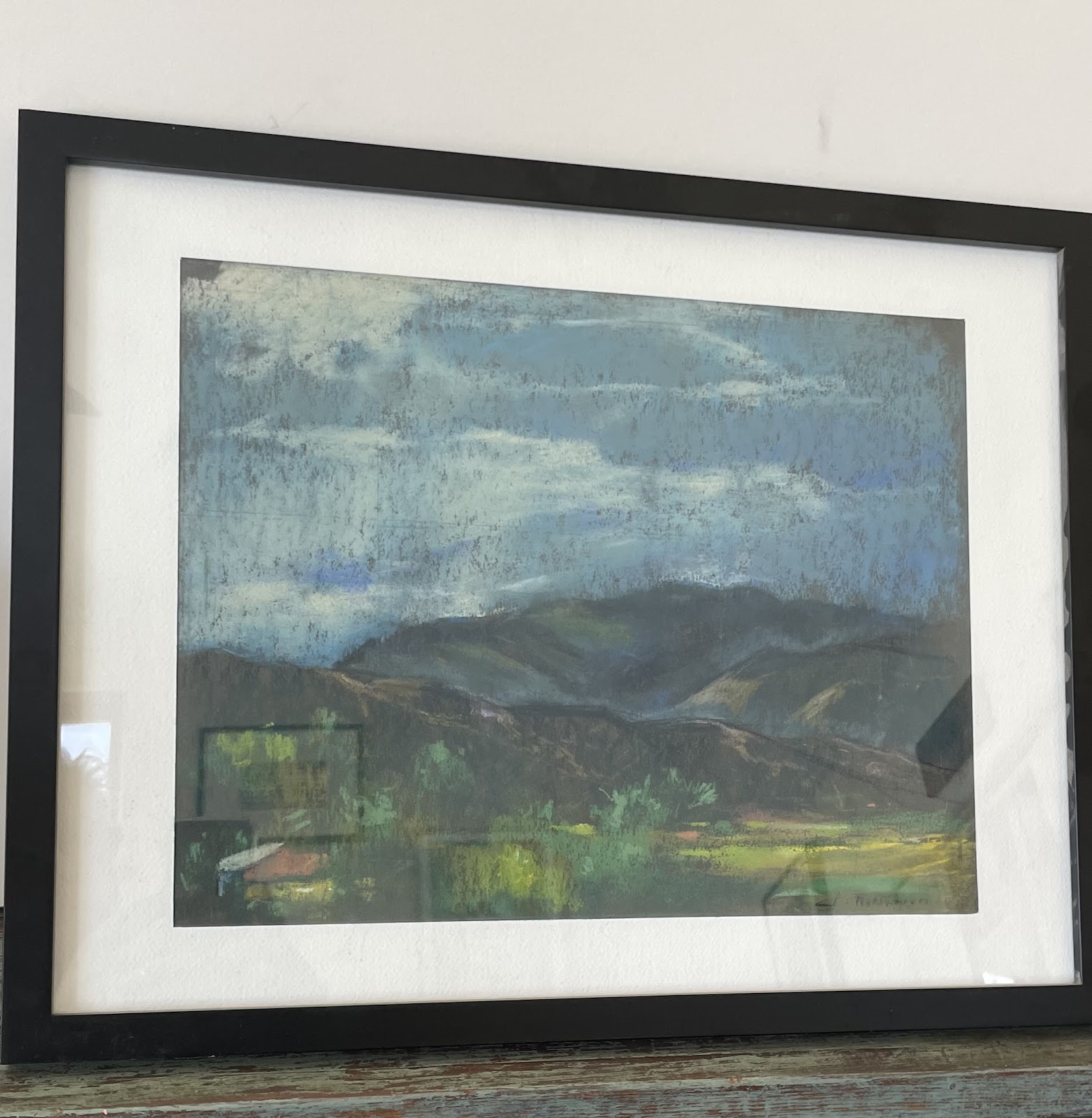Two Graces Taos, is currently offering this framed double sided pastel by Julius Rolshoven at $2,800.
The landscape is signed at lower right.
“Ranchos de Taos Mountain View”
“Portrait of a White Robed Taos Pueblo Man” on verso
(which appears to be a study for the painting “Sun Eagle Tail”) ca. 1917-1920
Pastel on toned paper 14” x 11” (19” x 15” framed)
Julius Rolshoven
(October 28, 1858, born Detroit – December 7, 1930, died NYC)
$2,800.
In 1876 Rolshoven studied at Cooper Union an Art School in NYC with Ernst Plassman, in 1878 he continued his art studies in Germany at the Düsseldorf Academy, at first studying under Hugo Crolla, later studying under the tutelage of Frank Duveneck at his Venice and Florence schools, (becoming one of the “Duveneck Boys”). In Munich that fall of 1877 he studied under Ludwig Loefftz. Traveling to Paris (studying at the Academie Julien under Tony Robert-Fleury and Bougereau) where he met fellow artist E. Irving Couse. Around this time he met and married Anna Chickering (1859-1896). Anna died of pneumonia on December 5, 1896 in London. After her death Rolshoven returned to Italy and practiced portrait and genre painting, where he also taught art classes. He conducted a life class in Paris (1890-95) and in London (1896-1902).
Rolshoven decided to settle in Florence in 1902. While on a painting expedition in 1905, he came upon Castello del Diavolo (Devil’s Castle) which belonged to the family Talani. In 1907 he was able to purchase the dilapidated property. For many years Florence, Italy, became his adopted home. During this time he re-stored the nearly thousand year old property (Castello del Diavolo) into the fine estate he recognized it to be, which later to become an Italian National Monument. The castle was the former residence of Lisa Gherardini, known to be the model for Leonardo Da Vinci’s the Mona Lisa, (this fact alone should have designated the castle as a national monument).
Sometime between 1912-1914 Rolshoven painted subject matter in Tunisia and other areas in North Africa. Thus beginning a fascination of the covered heads and robed figures he portrayed there and later in Taos.
In 1913 (or 1914?), Rolshoven returned to the USA as World War I was beginning. December 1915 he married his second wife Harriette Haynes Blazo (1876-1964) in Los Angeles. During what is thought to have been a honeymoon trip the newly wed Rolshoven’s eventually settled in the American Southwest, where he was invited to enjoy studio space in Santa Fe’s Governor’s Palace (Palace of the Governors Museum).
Word spread quickly about the artist visiting the southwest from Europe and was invited to become an associate member of the Taos Society of Artists in 1917, by 1918 he was a granted full membership to the association. He was included as one of the first artists to exhibit at the Palace of the Governors Museum when it first opened.
Rolshoven’s artistic ability stood out among the other members of the Taos Society.
Rolshoven lived intermittently in Taos (his primary studio most likely remained the accommodations at the Palace of the Governors) painting in New Mexico from 1916 to 1920. During these years he was the senior and most experienced member of the TSA.
Rolshoven was also an associate member of the National Society of Paris, a member of the Secession Society of Munich, and the National Arts Club.
“The simple truth is that the creative spirit is at home wherever that spirit finds breathe to draw. It is neither national or international. If the knowledge of life is to be bounded by forty-eight states, that too is another matter - and is of course informing.
No one need be victim of place, for any place is all there is - it being the world where all life lives, and no American, not any real one, can be anything but American no matter where he is.” from an essay by Marsden Hartley (1877-1943) ‘Is There an American Art’ 1938
*Please note, some of the dates mentioned here may be fluid and not completely accurate.





















No comments:
Post a Comment